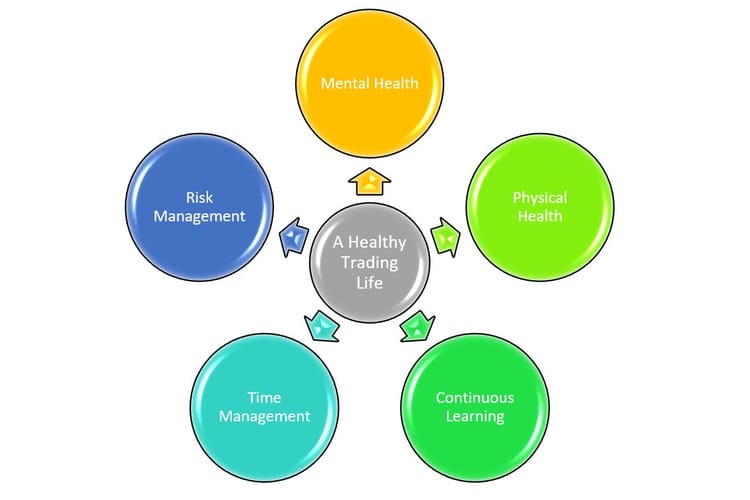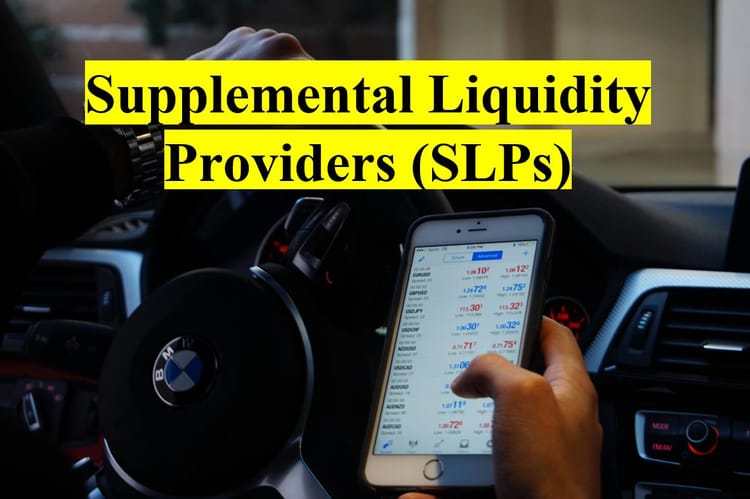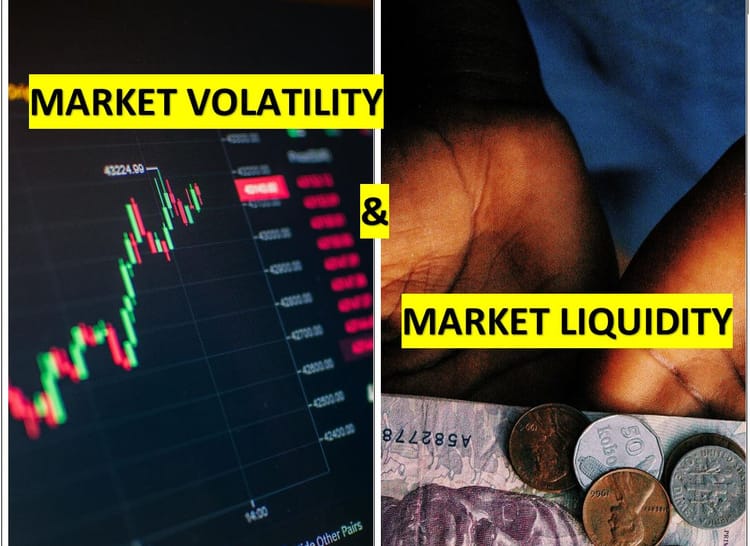The importance of stop loss in trading and how to use it correctly

Consider yourself a trader monitoring the stock of a technology company, XYZ Inc. After conducting thorough research and technical analysis, you decide to enter a long position and buy 100 Shares of XYZ Inc. at $50 per share, anticipating the stock will rise in value. Also, considering your risk-reward ratio of 1:2 in current market conditions, you are prepared to sell the shares if the share price falls below $45 or rises to $60.
So, What do you do?
You set a stop-loss order at $45 per share. If the stock price falls to or below $45, the broker will automatically execute your sell order for 100 shares.
Now, there are two possibilities,
1) If, due to some recent positive development, Your targeted share price reaches $60, your trade will be successful, and you can exit the trade, sell the shares and take the profit. Your stop-loss order is never triggered.
2) In an alternate scenario, if the market sentiment turns negative due to unexpected events, it will cause the stock price of XYZ Inc. to decline to $40. Without a stop-loss order, you would have experienced a loss of $10 per share. However, thanks to her strategic use of a stop loss order at $45, the stop loss is triggered automatically when the stock price hits that level. Your 100 shares are sold at $45 per share, limiting your loss to $5 instead of $10.
Did You notice?
The stop-loss order has helped you escape a potentially larger loss, preserving your capital for future trades.
So,
What is a Stop Loss Order?
Stop loss, in its essence, is a risk management tool designed to limit losses in a volatile market. It is a predetermined order placed by a trader to automatically sell or close a position when the asset's price reaches a specified level. The trader chooses this level based on their risk tolerance and market analysis. The primary objective of a stop loss is to limit potential losses on a trade and protect the trader's capital from significant declines.
The Importance of Stop Loss in Trading
Understanding and appreciating the importance of stopping loss is crucial for any trader.
It's your shield against Potential Losses!
The most fundamental aspect of stop loss is its ability to limit potential losses. By setting a predetermined point at which a losing position will be automatically closed, traders protect their capital from significant depletion. This risk management feature is vital in preserving financial stability over the long term.
And this makes you,
More disciplined in trading, preventing Emotional Decision making!
Yes, Stop loss enforces discipline in trading,
a trait that is often the dividing line between successful and struggling traders.
By adhering to predetermined exit points, traders resist the emotional pitfalls of letting losing positions linger in the hope of a reversal. This discipline contributes to a more strategic and controlled approach to trading.
Emotions can cloud judgment, leading to impulsive decisions that may not align with a trader's overall strategy. Stop loss is a rational, premeditated mechanism that helps traders avoid making decisions based on fear, greed, or momentary market fluctuations.

Placing Stop Loss can also help you in
Risk Reward Management.
Stop loss is an integral component of effective risk-reward management. Traders can set stop-loss levels with profit targets, ensuring each trade has a well-defined risk-reward ratio. This strategic balance is essential for optimizing profitability while keeping potential losses in check.
And helps greatly in
Facilitating Long-Term Consistency
Consistency is the hallmark of successful trading. By incorporating stop loss into their strategies, traders create a systematic and repeatable approach to each trade. This consistency, built on risk management principles, lays the groundwork for sustainable success over the long term.
Which in turn
Mitigates Risk of Market Volatility!
Financial markets can be highly volatile subject to sudden and unexpected price movements. Stop loss helps traders navigate this volatility by providing a pre-established mechanism for exiting a position if the market moves unfavorably. This proactive approach mitigates the impact of erratic market conditions.
And lastly,
It Promotes Sound Sleep!
We are not kidding!
The psychological toll of worrying about open positions can be significant. Stop loss gives traders peace of mind, allowing them to sleep soundly, knowing their risk is capped. This mental well-being is essential for maintaining focus and making informed decisions during trading hours.
But there is a problem with Stop Loss;
Be aware that a Stop-Loss order is a good way to protect against risks; however, it is not a foolproof solution. There are hidden risks in its technical execution because it functions as a Market order. This means it instructs the market to 'Execute the action (buy or sell) at the closest possible price that the market is currently offering.' While this approach ensures the fastest execution of the action, it may also result in poor pricing, leading to unexpected losses. This is particularly true when there is a gap between the Bid and the Ask, known as the Spread.
For example, if you buy a stock at $100 and set a stop-loss at $90, when the price reaches the stop, the order is triggered and instructs the market to 'Let me go out of the trade at any price that the market is offering.' In non-liquid stocks with few buyers and sellers for every cent, the next buyer in the market might offer only $80. Consequently, the order will execute at this price, resulting in a $20 loss instead of the planned $10.
Furthermore, if you keep the stop-loss overnight, you might wake up to find that the stock has gapped down significantly, such as by 30%, due to something unfavorable happening to the company. In this case, your stop-loss will be executed at a disadvantageous price.
To address these issues, there is also a Stop-Limit order, which provides traders with more flexibility. It essentially tells the market to 'Execute my order at any price that the market gives, AND LIMIT it to a maximum price of X.'
In our example, you buy the stock at $100, set a stop-loss at $90, and add a LIMIT of $89.95. When the price reaches the stop, the order is triggered, and the market looks for a possible buyer for your stock at the highest possible price while limiting the minimum to $89.95. The risk here is that the order may not be executed, but you will still own the asset.
Now that you have a good idea of how beneficial a stop loss can be for you,
It's an excellent time to review,
How to Correctly Set Up Stop Loss?
Setting up a Stop Loss order is a relatively simple process, but setting it up CORRECTLY requires consideration of certain factors. These steps may include,
1. Understand Your Risk Tolerance
The foremost factor to consider is Risk Tolerance,
But how do you understand your risk tolerance level as a trader? Below, we have tried to explain some familiar traders’ types and their risk tolerance levels.
You can get an idea from it where you fall as a trader,
1. Conservative Investors are the ones who prioritize capital preservation. They are risk-averse and prefer stable, low-volatility assets. They tend to set tight stop-loss levels to minimize potential losses.
2. Aggressive Traders, on the other hand, are aggressive and experienced day traders. They are comfortable with higher risk levels and willing to tolerate short-term market fluctuations. They generally set more expansive stop-loss levels to allow for the market's natural volatility.
3. Moderate swing Traders aim for a balance between risk and reward. They carefully evaluate their risk tolerance, considering factors such as financial goals and time horizon. They set moderate stop-loss levels that align with the expected price movements of the assets they trade.
4. Cryptocurrency Enthusiasts- are the ones who recognize the inherent volatility in the crypto market. Due to high Volatility, Traders in this category generally set dynamic stop loss levels, taking into account the specific characteristics of the cryptocurrencies in their portfolio.
5. Newbie investors just entering the world of trading should take the time to understand their risk tolerance and the basics of market dynamics before setting up a stop loss. They may initially opt for a conservative approach, setting tight stop-loss levels while gaining experience. As they become more comfortable with trading, the approach to risk tolerance may evolve.
6. Retired investors focus on income generation and capital preservation. Their risk tolerance is lower as they rely on investments for retirement income. Before setting up a stop loss, they generally set conservative stop loss levels to safeguard her retirement funds.
2. Calculate Your Position Size
The position size refers to the number of shares or contracts traded in a single transaction. There are various answers to an acceptable position size, as it depends on multiple factors, including an individual's risk tolerance, trading strategy, and the size of their trading capital.
However, a commonly recommended guideline is the 2% rule, which suggests that traders should risk no more than 2% of their trading capital on a single trade.
For example, if a trader has $40,000 in trading capital, they would limit their risk to $800 (2% of $40,000). If a trade's stop loss is $2 per share, the trader can buy up to 400 shares (($800 / $2) = 400).
See, In this example, even if the trader incurs a loss of $2 on each of the 400 shares, His total loss will be $800 ( 2% of $40,000)
3. Choose the Right Type of Stop Loss Order
Different types of stop-loss orders cater to varying trading styles.
You need to choose the type that aligns with your strategy and the specific conditions of the market you're trading in.
There can be various types of Stop Loss Orders, and a few are mentioned below.
- Market Order: A market order is executed at the current market price as soon as the order is triggered. It guarantees execution but doesn't guarantee the exact price.
- Limit Order: A limit order is placed to buy or sell at a specific price or better. The stop price is above the current market price in a sell-limit order. The stop price is below the current market price in a buy-limit order.
- Trailing Stop Order: A trailing stop order is set at a percentage or a dollar amount away from the current market price. As the market price moves, the stop price adjusts, "trailing" the market price at a set distance.
- Guaranteed Stop-Loss Order (GSLO): Not available with all brokers, a GSLO is a premium service that ensures the execution of the order at the specified price. It protects against market gaps but usually comes with a higher cost.
- Volatility Stop: Based on market volatility, this stop adjusts based on the fluctuations in the market. It aims to adapt to varying market conditions by widening or narrowing the stop distance.
4. Identify Key Support and Resistance Levels
Support and resistance levels point you to the LOCATION of the price of where to place the stop loss.
Support and resistance levels are strategic price zones within a market where historical buying or selling activity has been notably concentrated.
Support levels represent areas where the price historically has had difficulty falling below, often due to an accumulation of buying interest.
On the other hand, resistance levels signify zones where the price has encountered barriers to rising further, typically attributed to increased selling activity.
Placing a stop-loss just below a significant support level or above a notable resistance level helps safeguard against unexpected price movements that might signal a reversal.
5. Backtest Your Stop Loss Strategy
Before deploying your stop-loss strategy in live markets, conducting a comprehensive backtesting process within a simulated or demo trading environment is highly recommended.
Backtesting involves applying your predetermined stop-loss strategy to historical market data, allowing you to assess its performance across various market conditions.
By using simulated market conditions, you gain valuable insights into the strengths and weaknesses of your strategy, identify potential issues, and ensure that it aligns with your risk tolerance and trading objectives.
6. Tailor Stop Loss to Market Conditions
Even if you diligently consider all the technical and fundamental factors to determine your stop-loss levels,
Pay attention to account for the prevailing market conditions to avoid potential losses.
Market conditions are crucial in influencing price movements, and failing to adapt your stop-loss strategy to the current environment can undermine your risk management efforts. Here's why:
Markets are dynamic and can experience volatility, liquidity, and overall behavior shifts. Technical and fundamental analysis may provide a snapshot of the market but may not capture rapid changes in conditions.
Unforeseen events, such as economic releases, geopolitical developments, or unexpected news, can swiftly impact market sentiment.
Market sentiment is also a crucial factor influencing price movements. Traders' emotions, perceptions and overall sentiment can drive short-term fluctuations.
Moreover, Markets can transition from trending to ranging conditions. Failing to recognize these shifts and adjust your stop-loss levels accordingly may lead to losses, as the strategy that worked well in a trending market might be less effective in a sideways or consolidating market.
7. Factor in Overnight Risk
Overnight gaps in the market can impact your positions.
How? We explain
Let's say you are a currency trader and decide to hold a long position in a particular currency pair over the weekend. On Friday, the market closes with the currency pair at $1.2000. Based on your analysis, you set a stop-loss order at $1.1950 to manage potential losses.
However, geopolitical tensions escalated over the weekend, leading to an unexpected event that significantly impacted the currency markets. As you anticipated, the currency pair won't resume trading at $1.2000 when the market reopens on Monday. Instead, it opens with a substantial gap down at $1.1850 due to the weekend developments.
In this scenario, the overnight gap has created a disparity between the closing and opening prices, bypassing your intended stop-loss level of $1.1950. If you hadn't considered the potential overnight risk and adjusted your stop-loss accordingly, your trade would have been executed at the market opening, resulting in a more significant loss than anticipated.
You could have adjusted your stop-loss order to mitigate this risk to account for the potential overnight gap. For example, setting a wider stop-loss at $1.1800 might have provided a buffer to withstand the adverse impact of the gap, giving your trade more flexibility to weather unexpected market movements.
8. Learn from Experience
Every other step mentioned above would have no effect,
If you don’t learn from your mistakes!
Every trade is a learning opportunity. It would help if you analyzed your trades, especially those where the stop loss was triggered. Learn from successful and unsuccessful trades to continuously refine and improve your stop-loss strategy.
Moreover, Maintain a record of your stop-loss strategy, detailing the rationale behind your decisions.
A Trading Journal can be a handy tool in this regard.
This documentation is a valuable reference for future trades and allows you to learn from successes and setbacks.

Now, Here are some of the
Common Mistakes to Avoid When Setting a Stop Loss Order
Too Tight A Stop Loss!
One prevalent mistake is setting stop-loss orders too close to the current market price. While the intention is to minimize losses, an overly tight stop loss can result in premature exits, especially in a volatile market.
Ignoring the market!
Ignoring the broader market direction can lead to misguided stop-loss decisions. So, a thorough technical analysis, identifying the trends and aligning stop loss accordingly is crucial.
Flowing in emotions
Panic selling during a market dip or holding onto a losing position hoping for a reversal are common emotional pitfalls. So, you should practice discipline and stick to their predefined stop-loss strategy.
Not diversifying the stop loss!
Diversification is not only for portfolios but also for stop-loss strategies. Relying solely on one type of stop-loss order may limit a trader's ability to adapt to different market conditions. Exploring and incorporating various stop-loss techniques can enhance risk management effectiveness.
Ignoring the fundamentals!
While technical analysis is crucial, overlooking fundamental factors can be a grave mistake, especially for Swing Traders. Events like earnings reports, economic indicators, or geopolitical developments can impact the market.
Apply a Set and Forget Approach!
A set-and-forget mentality with stop-loss orders is a recipe for disaster. Market conditions change, and so should your stop-loss strategy.
And last, Overcomplicating things!
While incorporating advanced techniques can be beneficial, overcomplicating stop-loss strategies may lead to confusion and indecision. Traders should aim for simplicity, focusing on clear, well-defined stop-loss parameters aligning with their overall trading goals.
Conclusion
In conclusion, A well-placed stop loss is a crucial risk management tool, safeguarding traders from excessive losses and preserving capital.
By understanding the market conditions, traders can balance risk and reward. It is essential to view stop loss as an exit point and a strategic component of a comprehensive trading plan. Being disciplined in the use of stop losses empowers traders to mitigate the risk unpredictability in financial markets.






